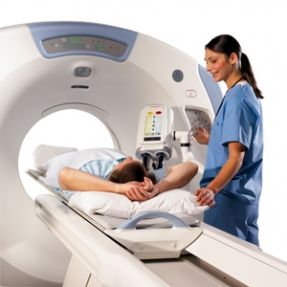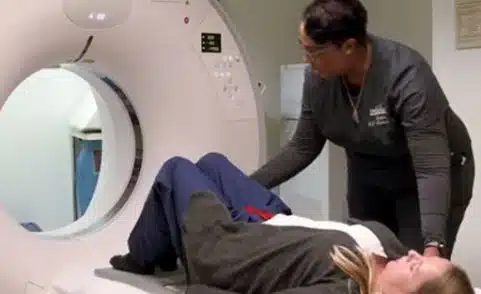
When to Consider Bone Density Testing
 Did you know that there is a simple test that can tell you if you have weak bones or osteoporosis before you break a bone? If you are a woman age 65 or older, or a man age 70 or older, this test could pertain to you.
Did you know that there is a simple test that can tell you if you have weak bones or osteoporosis before you break a bone? If you are a woman age 65 or older, or a man age 70 or older, this test could pertain to you.
Osteoporosis is a common condition that weakens bones, often progressing without symptoms or pain. The National Osteoporosis Foundation estimates 55 percent of people age 50 and older in the United States have low bone mass. The condition is more common among women (30 million affected) but men can also be affected (14 million).
Risk Factors for Osteoporosis:
- Female age 65 or older
- Someone else in your family has osteoporosis
- Estrogen deficiency (which can be caused by menopause)
- Little or no exercise
- Past or current tobacco and/or excessive alcohol use
- Use of certain medications such as corticosteroids (e.g., Prednisone)
- Low body weight or a small frame
- History of broken bones
As a preventable and treatable condition, early diagnosis is valuable. Quantitative Computed Tomography (QCT) is the most advanced way to find out if you have low bone mass, and assess your risk for osteoporosis.

QCT Experience: Only 15 Minutes in the CT Scanner

During the exam, a certified technologist will scan your spine and hip. The measurement of bone mass at these two areas is critical since bone mineralization is not uniform throughout the body; meaning some skeletal sites may be normal, while others may be osteoporotic and prone to fractures.
Early Detection: QCT’s Key Advantage Over DXA
QCT is likely to detect low bone mass earlier than other bone mineral density exams – such as DXA – allowing patients to make lifestyle changes or begin treatments earlier. QCT is able to do this because the unique 3D volume software can isolate the soft bone in the spine for analysis. The soft bone (trabecular bone) is affected by changes in density earlier than the hard bone (cortical bone).
Because the exam is performed on a CT scanner, you will be exposed to a small amount of radiation. RAYUS takes steps to ensure your exposure is as low as reasonably allowable while capturing diagnostic-quality images.
When to Talk to Your Provider About QCT
As recommended by the National Osteoporosis Foundation
- you are a woman age 65 or older
- you are a man age 70 or older
- you break a bone after age 50
- you are a woman of menopausal age with risk factors
- you are a postmenopausal woman under age 65 with risk factors
- you are a man age 50-69 with risk factors
- an X-ray of your spine showing a break or bone loss in your spine
- back pain with a possible break in your spine
- height loss of ½ inch or more within one year
- total height loss of 1½ inches from your original height
A health care provider’s referral is required for this exam. Talk to your provider to discuss if a bone mineral density test, like QCT, is right for you.
